Birmingham heritage courtesy of BMAG- Sarehole Mill & Blakesley Hall
Hello everyone, I’m Katie and this is my first blog post for the Birmingham Conservation Trust as their new volunteer blogger. I thought for my first post I would share with you some photographs and memories of one of my favourite heritage days out of last year- a visit to the historical Sarehole Mill and 16th century Blakesley Hall. Hope you enjoy!
Sarehole Mill and Blakesley Hall are two historical gems tucked away in the suburbs amidst the hustle and bustle of the city and are definitely worth a visit! They form part of the Birmingham Museum and Art Gallery (BMAG) heritage sites dotted around the suburbs of the city. There are 6 sites in total including the grand Elizabethan Aston Hall (well worth a visit by candlelight) and the aforementioned Tolkien’s Sarehole Mill; which are probably the most well-known of the sites.
On this particular visit I started at Sarehole Mill in Hall Green and then dropped in to visit Blakesley Hall a short bus ride away in Yardley. My sister accompanied me and we purchased a joint annual ticket between us for £30 which gets you unlimited entry to all of the associated sites and museums which is well worth the price. (More details on the BMAG website )
Sarehole Mill was surprisingly quiet for a sunny Saturday Morning in spring. The staff were really friendly and there were plenty of displays with information about the history and different parts of the mill.
Of course the mill is most famous for being the inspiration behind ‘The Shire’ from the Lord of the Ring books by JRR Tolkien who spent his childhood living around the corner on Wake Green Road. It was built around 1750 and is apparently only one of two surviving working watermills in the Birmingham area (the other being New Hall Mill, Sutton Coldfield).
Over the years the mill has been used for grinding corn for flour, grain for bread, bones for fertilizer and was even leased to Matthew Boulton for scientific purposes to carry out metal working experiments. A steam engine was added in the latter half of the 19th century alongside the water wheel to generate more power. It was in use as a mill until just after the First World War and unfortunately afterwards it fell into a state of disrepair and neglect. It was saved in the 1960’s by a local community campaign resulting in it’s restoration and transformation into a museum.
My favourite part of Sarehole Mill was the view across the millpond at the rear which had a lovely tranquil atmosphere. Apart from the faint sound of traffic from the nearby roads I almost forgot I was in a bustling city suburb. Looking across the pond you could imagine being transported back to a time when there was nothing but rural fields and mud tracks. The reflection of the mill in the water provided some great photographs with the terracotta brickwork contrasting well with the bright blue sky and the greenery from the surrounding gardens.
On exiting the grounds of the mill we walked along the River Cole and grasslands alongside Sarehole. These form part of the Shire Country Park and a short walk away is Tolkien’s childhood home.
A short bus ride away we arrived at the grade II* listed Tudor manor house Blakesley Hall. I had been here once before on a school trip years ago and it appeared so much smaller than I remembered. The manor house is partly hidden from the main road by a brick wall and hedgerow and you can just about see the first floor peeking out over the top. The house is situated in grounds which consist of a traditional herb garden and orchard which were very well kept and it has a visitor centre, café and shop.
Built in 1590 it is a beautiful black and white timber house with wattle and daub infill, a fine example of Tudor architecture which is a rarity in Birmingham. The inside has a rickety charm with uneven floorboards and sloping walls. My highlights were the Long Table in the great hall and the sloping timber floor of the long gallery on the first floor.
The hall was originally a Yeoman’s farmhouse and has been extended and modified during its use as a private dwelling up until the 1930’s. The interior has been furnished to replicate what it might have looked like during the 17th Century with many original artefacts and furniture on display.
Considering I have lived in Birmingham for most of my life I was a little disappointed with myself that I had not taken advantage of this annual ticket offer before and would definitely recommend to others taking time to visit these places.
My next BMAG heritage site visit was to the Smith and Pepper Factory which is part of the Museum of the Jewellery Quarter and will the subject of my next blog post.
Facts:
Sarehole Mill
- Location: Cole Bank Road, Hall Green
- Year: Circa 1768-1771
- Use: Watermill- use for milling corn & grain
- Style/Type: Georgian Era, agricultural building
- Material: Brick with clay roof tiles
- Status: Grade II Listed
Blakesley Hall
- Location: Blakesley Road, Yardley
- Year: 1590
- Architect/Builder: Richard Smalbroke
- Use: Residential dwelling
- Style/Type: Tudor farmhouse
- Material: timber and wattle-and-daub infill, external lime render painted white, brick chimneys
- Status: Grade II* Listed


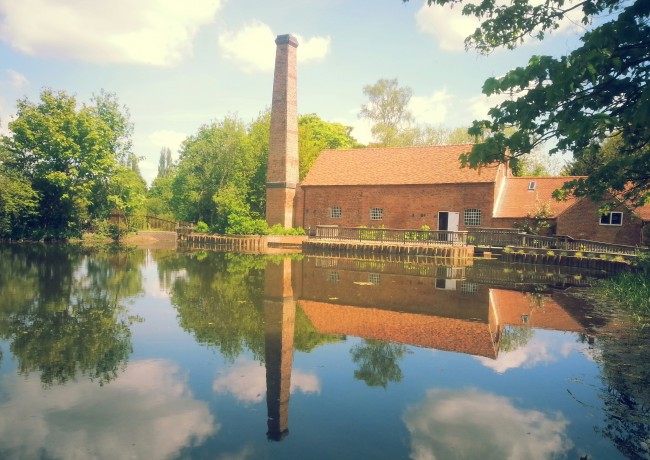
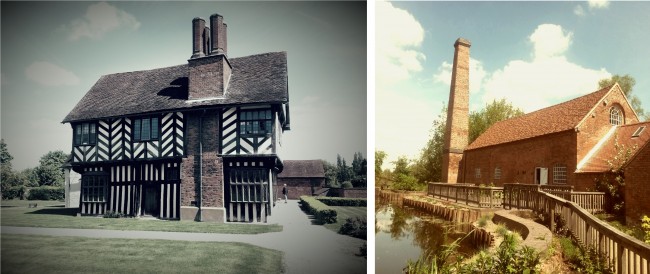
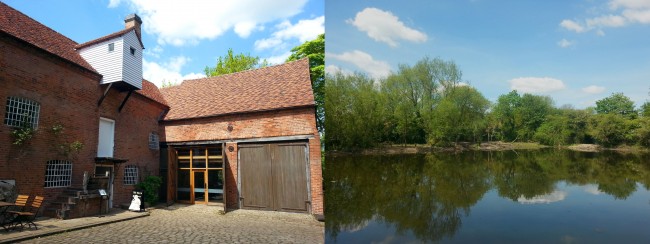
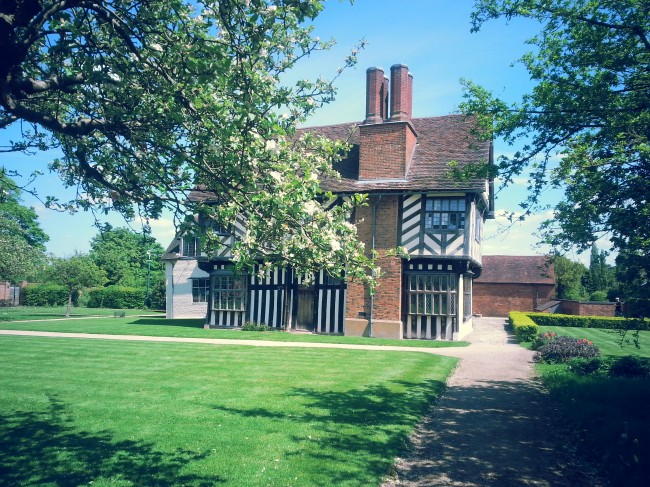
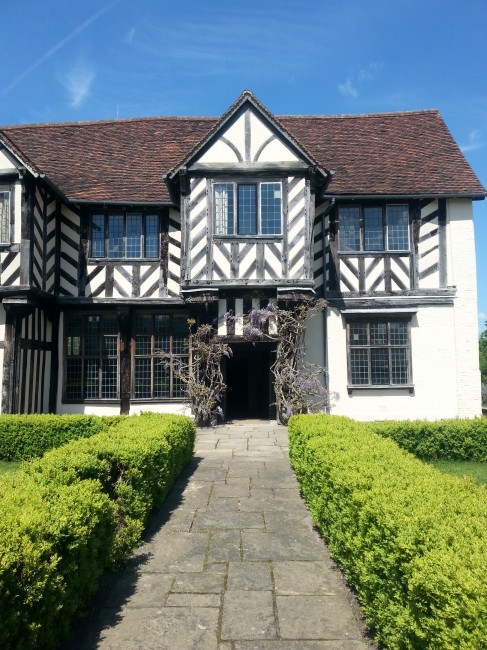
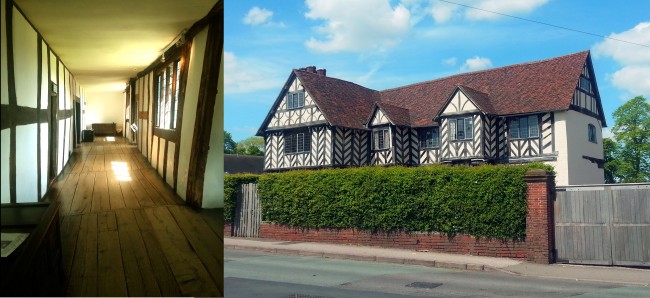

Thank you both for your kind comments. Glad you enjoyed my first post 🙂
Great stuff Katie, and excellent photos too. Looking forward to reading more!
What a wonderful first blog Katie! We do have some brilliant museums in Brum